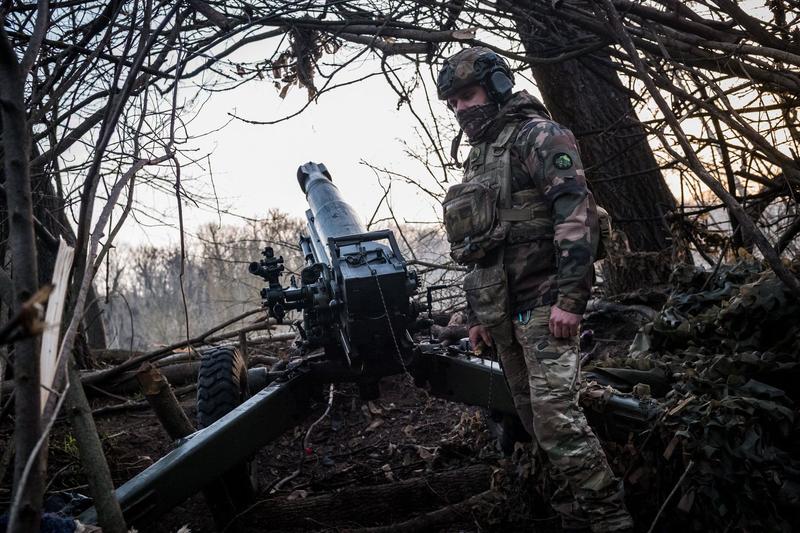Introduction
To many of the victims of Romania’s brutal communist regime, the government’s efforts at restitution seem to be more of a şmecherie (pronounced “sch-mek-aree-a” - a Romanian ruse) than an honest effort at justice. Tens of thousands of victims have been waiting in vain for eight years or more for their claims to be resolved without any information as to the status of their files, while thousands more have gone to their graves without any justice at all. Twenty years after the fall of communism, and eight years after implementing what should have been the model for restitution throughout Central and Eastern Europe, Romania’s restitution process is mired in indolence, insolence, and obedience to political interests instead of a commitment to justice and the rule of law.
Over the years, this publication has provided in-depth analyses of Romania’s basic restitution law, Law 10/2001 (“Law 10”), the amendments to it and the regulations promulgated to enforce it. (See The Romanian Digest™ Archive at www.hr.ro.) While the Romanian government has commendably provided restitution to thousands of victims since 2001, this article focuses upon the terrible reality faced by over a hundred thousand victims of communism who still have no idea when or if they will ever receive justice from a state whose subdivisions appear either unable or unwilling to rectify the injustices of the past.
Restitution in practice
It is morally unacceptable to provide restitution to half of Romania’s victims and provide indecision, silence and impudence to the rest. But this is the state of restitution in Romania as described in a recent report of the Romanian Academic Society (“SAR”), entitled “Property Restitution: What Went Wrong in Romania?” in which SAR characterizes the restitution process as insensitive, confusing and abusive. Certainly, it would be mistaken not to acknowledge that thousands of claimants have obtained restitution from the Romanian state – either through their relentless diligence or by the luck of having their claims assessed in localities that acted promptly and pursuant to the law. Even some claimants in the notorious black hole of restitution that is Bucharest have managed to obtain restitution, although all too often after protracted litigation. But we write of the thousands of claimants lost in limbo – that first circle of hell where for eternity they are deprived of any response from the Romanian government to their claims.
This is how the process is supposed to work. Restitution claims at the local level are submitted to commissions specially created by the locality. After completing the file with the necessary documents, the commission issues a decision, either approving in-kind restitution or restitution by equivalent, or rejecting the file or redirecting it to another competent institution. If the commission decides upon restitution by equivalent, the decision accompanied by all of the documents on which it is based, is transmitted to the Central Commission for Establishing Compensation within the National Authority for Property Restitution (“ANRP”) which, in turn, checks the legality of the rejection of the in-kind restitution claim. If the Central Commission decides that in-kind restitution is no longer possible, then the entire file is submitted to an independent evaluator who prepares an evaluation report establishing the amount of compensation to be awarded to the claimant.
According to the most recent activity report of ANRP, the total number of restitution requests submitted throughout Romania was approximately 202,000, out of which decisions have been rendered in almost 103,000 cases, either approving, rejecting or redirecting the file to the responsible institution. According to the SAR Report, out of the restitution claims that had been fully resolved country, almost 63,000 received favorable decisions at the local level, around 1,700 at the national level such as ministries and the Authority for State Assets Recovery (“AVAS”), and approximately 15,000 files were fully evaluated by ANRP. Based on this data, even at the government’s current level of efficiency, the restitution process will last for at least eight years more, since many of the decisions rendered are not final. But this figure doesn’t take into consideration the sloth-like progress at the local level where finality may not come for another twenty-four years – well after all the remaining claimants are dead. Indeed, last years’ Parliamentary revisions to the law led to overlapping rights granted both to former owners and to the current tenants, the latter of whom have consistently benefited more from the protection of the Romanian state than have the victims from whom the properties inhabited by the tenants were stolen. In turn, this led to more indecision and therefore delays in granting in-kind restitution or restitution by equivalent.
Situation at the local level
Although the processing of a request for restitution from the date of its submission until the date of a decision seems simple enough, in practice it has proven to be a long and troublesome process. The period of time necessary for the commission within a local city hall to render a decision differs from one county to another, depending on the volume of files and also to the number of personnel dealing with these issues. So while it may take a couple of years until the applicant receives a resolution of the restitution claim, the fault lies with a nation that simply does not care enough to allocate sufficient resources to the process.
Because the implementation of legal provisions in force must take into account so many local institutional factors, the restitution process at the local level does not have a unitary profile in the country, as noted in the SAR report. There are Romanian counties where the number of restitution requests are small, and the percentage of cases that received a decision thus far are high -- over 90% in Alba Iulia, according to the SAR report. But there are other small counties where, even though the number of restitution requests is low, the percentage of cases which received a decision is low as well, such as, for example, Calarasi. In fact, there are big cities with an incredibly poor resolution rate such as Constanta or Iasi and, most notorious of all, Bucharest. Unfortunately, the low percentage in resolving restitution files is characteristic of the situation throughout most of the country.
The blame lies with the dreadful organization of most municipalities, the inefficiency of their personnel or the lack of adequate personnel, improper and unclear communications to claimants, the opaqueness and lack of transparency of the process and, not so infrequently, the ill will of those charged to resolve the restitution claims. Glaringly, the absence of deadlines for the completion of files, the lack of sanctions in case of delays or the lack of responses to restitution requests, encourage the poor performance of the Romanian state and its subdivisions in resolving restitution claims. In addition, some counties simply ignore applicants’ requests for information despite being obliged to provide responses pursuant to Law 544/2001 regarding the free access to information of public interest. Undoubtedly, some responses to restitution requests become entangled and dependent upon local interests influenced by the increase over the past few years in the monetary value of real properties. The interest generated at the local level for certain properties can be assumed to have led to pressures on delaying decisions or nullifying legitimate restitution requests for the flimsiest of reasons.
Abominable Bucharest
Within this miserable picture of meager performance, Bucharest holds a special place of scorn. Although it has the highest number of restitution requests, almost 21% at the end of 2007, i.e. 42,430 files, as posted on the website of the Bucharest City Hall, only 11,259 have received decisions thus far. It took eight years to resolve only a quarter of the files submitted to Bucharest’s city hall. At that rate, Bucharest will not finish reviewing its restitution claims until 2033!
The Mayor of Bucharest is Sorin Oprescu. By all accounts, he is a decent and well-meaning man. If this assessment is correct, we ought to expect from him an immediate, resounding and uncompromising reorganization of the restitution department of the Bucharest city hall adding many more personnel and creating a much more efficient system of communication so as to fully and adequately resolve the restitution claims of the victims of communism. If the plight of the victims were not sufficient reason to expedite the process in Bucharest, maybe what might spur the Mayor to action is the realization that the failure to do so could result in an avalanche of additional litigation against the city that will be far more costly to resolve than would the cost of an efficient restitution administration.
While the General City Hall of Bucharest is the one competent to resolve restitution files submitted pursuant to Law 10, the five district city halls are the ones competent to coordinate the restitution process based on Law 18/1991 regarding land resources. This often leads to overlapping jurisdiction with two restitution processes for one property – a completely dysfunctional situation that further delays the rendering of restitution decisions.
Before the last local elections in which Mayor Oprescu emerged the victor, the number of restitution files resolved by the Bucharest city hall had increased. However, since Mayor Oprescu’s election, the rate of resolution of such claims has returned to its original snail’s pace. Already, the institutional deficiencies at the Bucharest city hall in providing answers to claimants have caused the submission of almost 30,000 court cases. This ought to strike just about everyone as an absurdity that cries out for a speedy solution.
Situation at the State level
The situation is even worse at the State level, although the highest number of restitution requests have been submitted to the local administrations. According to the SAR report, three quarters of the notices submitted to the central administration are with three institutions, which just happen to have the highest rates of unsolved cases: the Authority for State Assets Recovery (“AVAS”) with a total of over 60% of the case, 67% of which remain unsolved; the Ministry of Agriculture, also with 67% in unsolved claims; and the Ministry of Economy and Finance, with 52% of its matters unresolved.
Since the effective date of Law 247/2005, the ANRP became the agency that performs the evaluation of properties where restitution by equivalent (instead of in-kind) has been decided. This is done by independent real estate evaluators and based on international evaluation standards. Although this was supposed to put an end both to the unjustified delays, as well as to interference by local interests in resolving restitution files at the local level, in practice, this system is not functioning very well.
The ANRP has been exceedingly slow in resolving restitution files. Often, it is because of missing documents or missing information in such files due to the lack of land registry data and historical archives. Other complaints were raised in connection with the ANRP’s improper and deficient communication with claimants concerning the status of their restitution files. It is not understandable and even less justifiable that applicants must wait for years until they receive an answer concerning the status of documentation in their files, and this despite their repeated requests for information. Furthermore, most applicants also complain about the non-transparent evaluation method for their confiscated properties because even if they receive a decision stating the amount of compensation, they are not informed regarding the methods used in order to determine such amount, and, consequently, it is very difficult for them to dispute the validity of the evaluation method.
Even after a compensation title has finally been issued, the possibility to obtain shares in the Property Fund is still far off. The enactment of Government Emergency Ordinance No. 81/2007 seemingly represented a step forward in the restitution process by granting claimants the right to opt between compensation in cash up to a limit of 500,000 RON or in shares in the Property Fund. But, from the information posted on the ANRP website, the actual payment of compensation in cash is very slow, with only 2,826 requests resolved out of a total of 8,266 requests for compensation in cash in 2007-2008. Indeed, the amounts necessary for the payment of compensation in cash are quite significant, as properties are evaluated, following the entry into force of Law 247/2005, based on their market value, and that makes it impossible to predict when all payments in cash will be made. Similarly, it is still uncertain when the Property Fund will be listed with the Bucharest Stock Exchange, thereby providing an efficient means for holders of shares to obtain benefits on a regulated market. Indeed, at the moment, the selection of the Property Fund Manager is still underway and, although the potential candidates have submitted their offers, it is still uncertain when such process will be finally over.
Potential Remedies in Court
A court proceeding is the last remedy that a rightful owner of confiscated properties has to obtain justice. In case in-kind restitution is denied, or if a restitution by equivalent decision establishes an unsatisfactory compensation, claimants can go to court to vindicate their rights from the judicial power of the state that failed to protect them at the administrative level. In addition, many actions had been commenced in court based on the provisions of civil law by persons who had no grounds for pursuing theirclaims based on Law 10. Consequently, thousands of claims were brought to court in the last several years, but court decisions in restitution matters have been characterized by huge discrepancies in their results. The opposing court decisions rendered by courts in different counties resulted in international criticism of the Romanian judicial system. Consequently, the High Court of Cassation and Justice (“ICCJ”) unified the practice of the Romanian courts by means of decision no. XX, dated March 19, 2007. Before this ICCJ decision, the practice of the Romanian courts was divergent with regard to claims introduced against Romania’s unjustified refusal to respond to a restitution request in the 60-day term set by Law 10. Now, in case claimants face an unjustified lack of response from the competent authorities, they are entitled to submit claims in court. This will most certainly lead to a higher number of actions in court in the near future, introduced by persons who are tired of waiting for the competent authorities to act.
Another past problematic non-unitary practice of the Romanian court system concerned the admissibility of restitution claims based on the provisions of the Civil Code -- claims introduced in court after the entry into force of Law 10. The ICCJ ruled, by decision no. 33, dated June 9, 2008, that, in principle, persons whose matters are regulated by Law 10 will have to submit claims in court only based on the provisions of that law and not based on common civil law provisions. Furthermore, persons who have already introduced claims based on the procedure set by Law 10 cannot introduce any additional restitution claims based on general civil law, under the principle electa una via. This may lead in the future to more complaints before the European Court of Human Rights submitted by those who are now no longer permitted to resort to common civil law provisions in court.
The two aforementioned ICCJ decisions are important in unifying the practice of the Romanian courts with regard to restitution files. However, despite these significant changes, it is still possible that the courts may render contradictory solutions.
Conclusion
Nearly twenty years after the fall of Romanian communism, large numbers of its victims are still waiting for justice that is being doled out by the Romanian state at a rate which may not bring finality to some claimants for another twenty-five years or a period of almost forty-five years after the fall of Ceausescu. The situation is a national disgrace. The local and national authorities must seek immediate means to accelerate the restitution process and bring finality to the people who have suffered so much from the prior communist regime.
If the central government and local administrations are unwilling or too incompetent to move the restitution process to a fair and speedy conclusion, then the answer will lie in the Romanian courts, at the European Court of Human Rights for some and, quite possibly, through arbitration under Romania’s many bilateral investment treaties. This later option may be utilized by the various associations representing claimants so that persons with small claims that could otherwise ill-afford arbitration at the International Centre for the Settlement of Investment Disputes in Washington, D.C., can band together in one large action.
The distressing aspect of all of this is that Romania’s restitution efforts should not end in such derogatory fashion. A great and noble effort has been shredded by incompetence, indolence, and political expediency – and no Romanian political leader seems willing to correct the muddle and chaos that has befallen the process before it blows up in their face.
Rubin Meyer Doru & Trandafir
SOCIETATE CIVILA DE AVOCATI / LAWYERS PROFESSIONAL CORPORATION
IN ASOCIERE CU / AFFILIATED WITH HERZFELD & RUBIN, P.C.




















